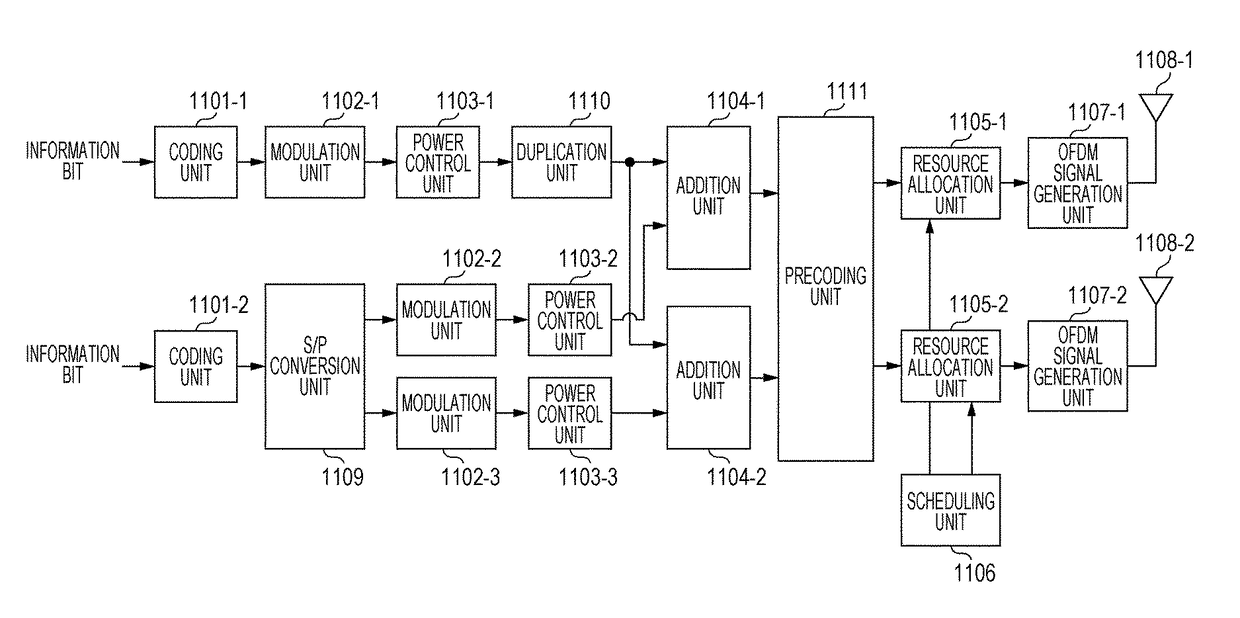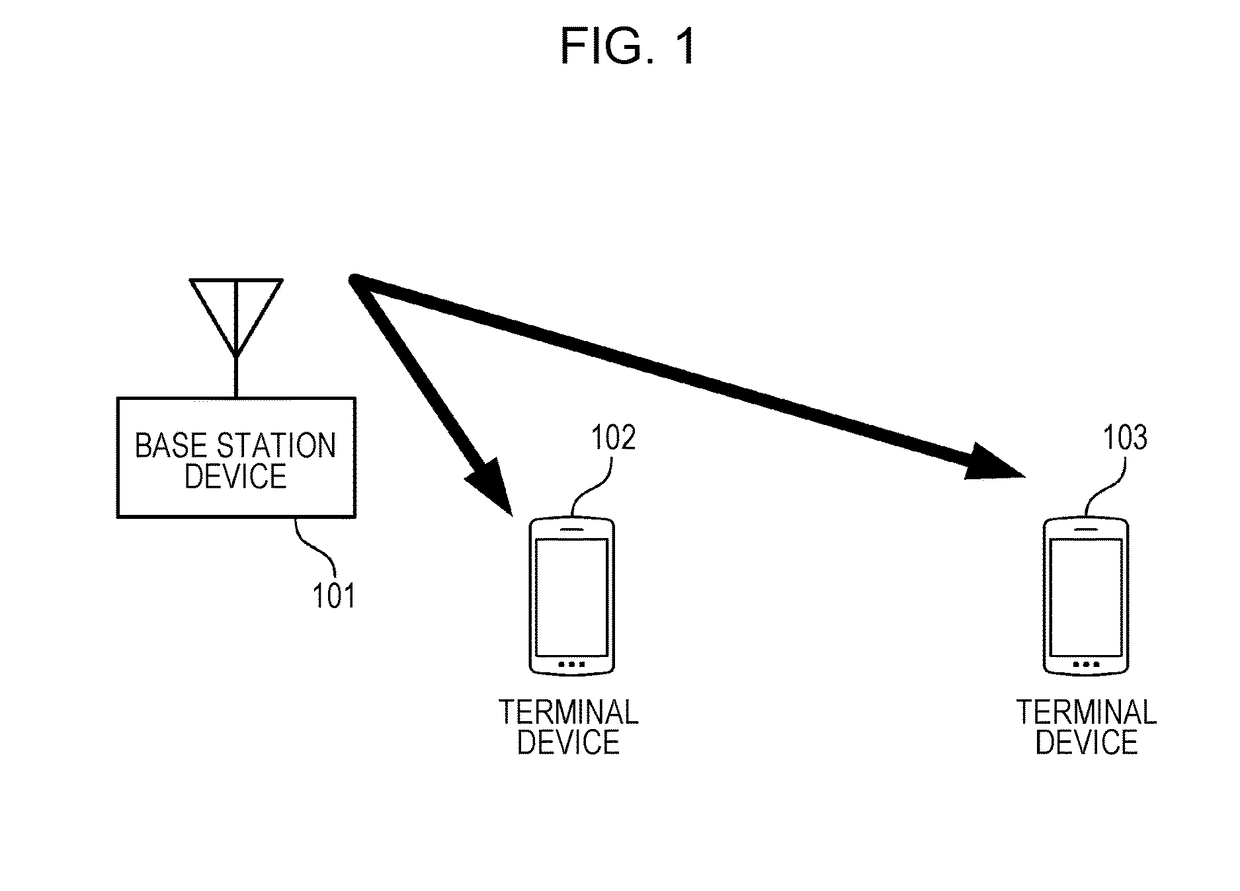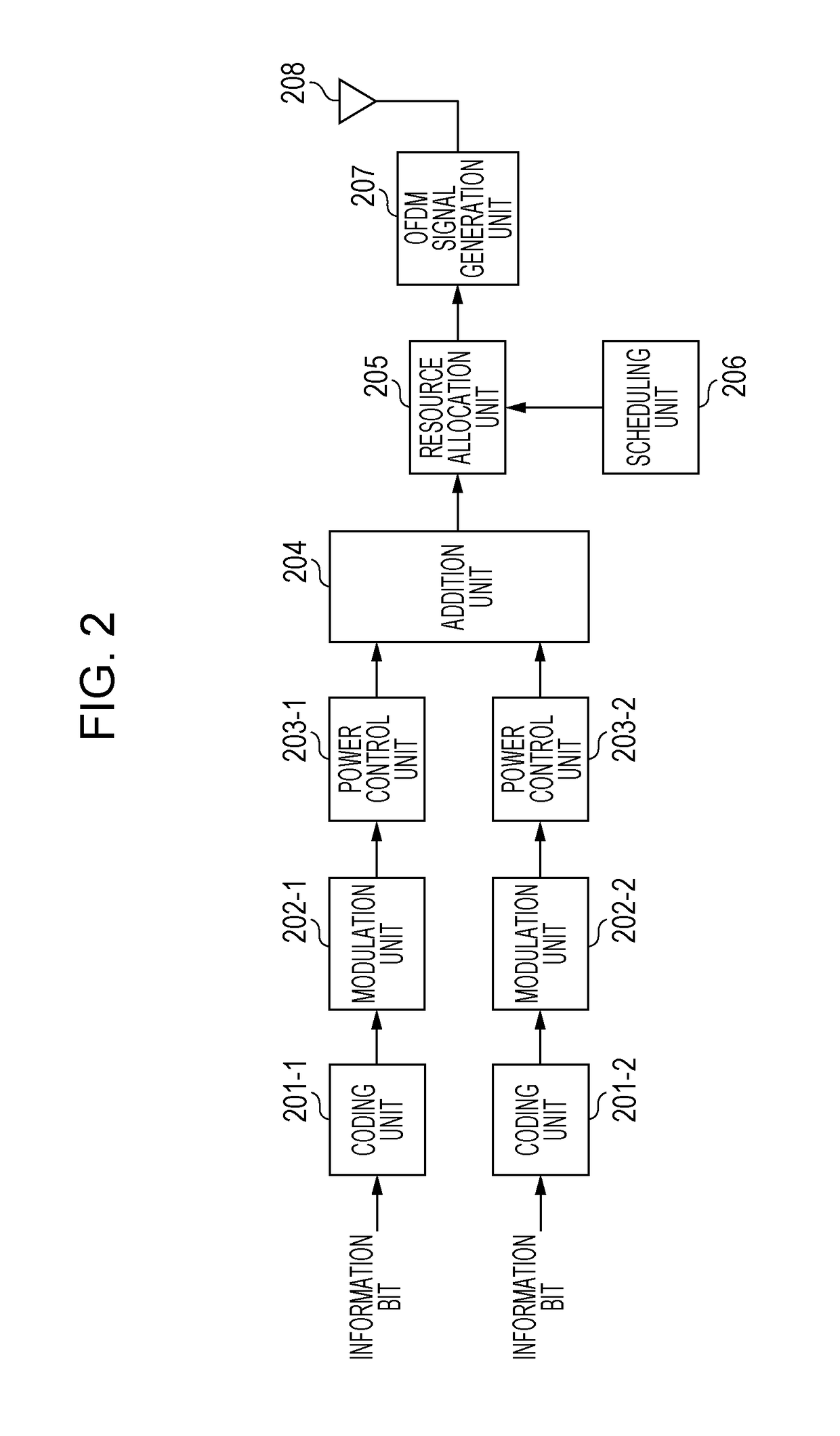Base station device and terminal device
a terminal device and base station technology, applied in multiple modulation transmitter/receiver arrangements, orthogonal multiplex, multiplex communication, etc., to achieve the effect of improving cell throughput or user throughpu
- Summary
- Abstract
- Description
- Claims
- Application Information
AI Technical Summary
Benefits of technology
Problems solved by technology
Method used
Image
Examples
first embodiment
[0037]A communication system in the present embodiment includes at least one base station device (a transmission device, a cell, a transmission point, a transmit antenna group, a transmit antenna port group, a component carrier, or an evolved Node B (eNB)) and a plurality of terminal devices (terminals, mobile terminals, reception points, reception terminals, reception devices, receive antenna groups, receive antenna port groups, or User Equipment (UE)).
[0038]FIG. 1 is a schematic view illustrating an example of downlink (forward link) of a cellular system according to the first embodiment of the invention. In the cellular system of FIG. 1, one base station device (eNB) 101 exists, and a terminal device 102 and a terminal device 103 that are connected to the base station device 101 exist. The base station device 101 multiplexes signals to the terminal device 102 and the terminal device 103 and transmits the resultant in the same sub-carrier.
[0039]FIG. 2 is a block diagram illustrati...
second embodiment
[0064]The first embodiment indicates that spread processing is applied to a remote terminal device (that is, having low reception quality). The following two points are considered in this case. First, compared to a transmission scheme such as the OFDM in which spread is not performed, in a transmission scheme in which spread is performed, a coding gain is reduced by an inter-symbol interference caused by frequency-selective fading, and therefore transmission performance is generally deteriorated at a time of coding compared to the OFDM. Second, it is possible to obtain a frequency diversity effect at a time of uncoding in the transmission scheme in which spread is performed, thus the transmission scheme in which spread is performed can obtain more excellent transmission performance than that of the OFDM in which a frequency diversity effect is not able to be obtained. That is, the transmission performance is reversed between the transmission scheme in which spread is performed and t...
third embodiment
[0083]Description has been given in the first embodiment for the base station device that applies spread processing to the signal addressed to the remote terminal device. When the base station device serving as a transmitter performs the spread processing, the terminal device serving as a receiver needs to perform despread processing. When the DFT is used for the spread processing, the IDFT is used for the despread processing, but in this case, a problem may arise as to which sub-carrier is to be subjected to the IDFT processing. When resource allocation is different between terminal devices participating in the DL-NOMA, it is considered that the near terminal device is notified of a DFT duration (that is, allocation information) of the signal to the remote terminal device, but control information increases when the allocation information is notified.
[0084]Thus, when the signal to the remote terminal device is spread, allocation to the remote terminal device and resource allocation ...
PUM
 Login to View More
Login to View More Abstract
Description
Claims
Application Information
 Login to View More
Login to View More - R&D
- Intellectual Property
- Life Sciences
- Materials
- Tech Scout
- Unparalleled Data Quality
- Higher Quality Content
- 60% Fewer Hallucinations
Browse by: Latest US Patents, China's latest patents, Technical Efficacy Thesaurus, Application Domain, Technology Topic, Popular Technical Reports.
© 2025 PatSnap. All rights reserved.Legal|Privacy policy|Modern Slavery Act Transparency Statement|Sitemap|About US| Contact US: help@patsnap.com



